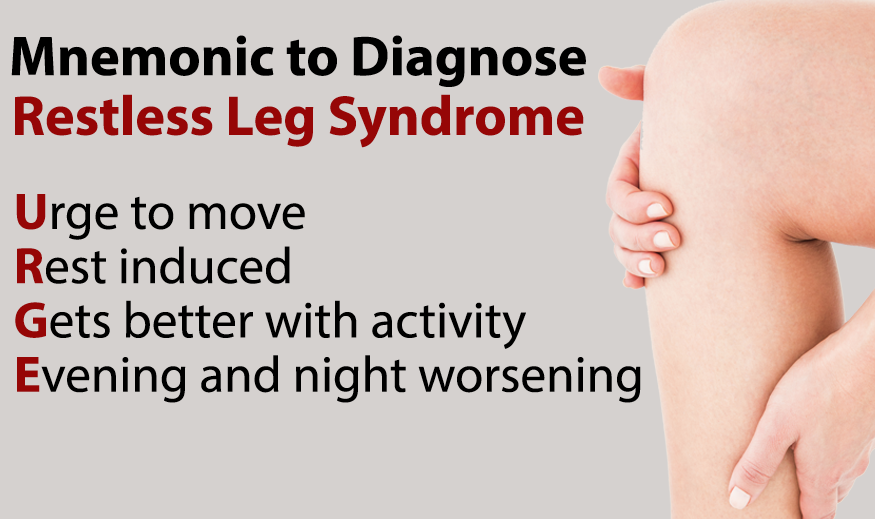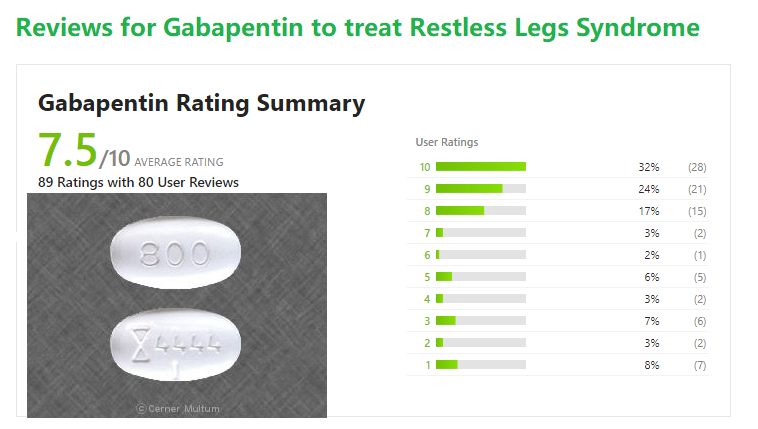Restless legs syndrome (RLS) is a disorder of the part of thenervous system that causes an urge to move the legs. Because it usually interferes with sleep, it also is considered a sleep disorder.
Causes of Restless Legs Syndrome
 In most cases, doctors do not know the cause of restless legs syndrome; however, they suspect that genes play a role. Nearly half of people with RLS also have a family member with the condition.
In most cases, doctors do not know the cause of restless legs syndrome; however, they suspect that genes play a role. Nearly half of people with RLS also have a family member with the condition.
Other factors associated with the development or worsening of restless legs syndrome include:
- Chronic diseases. Certain chronic diseases and medical conditions, including iron deficiency, Parkinson’s disease, kidney failure,diabetes, and peripheral neuropathy often include symptoms of RLS. Treating these conditions often gives some relief from RLS symptoms.
- Medications. Some types of medications, including antinausea drugs, antipsychotic drugs, some antidepressants, and cold and allergymedications containing sedating antihistamines, may worsen symptoms.
- Pregnancy. Some women experience RLS during pregnancy, especially in the last trimester. Symptoms usually go away within a month after delivery.
Other factors, including alcohol use and sleep deprivation, may trigger symptoms or make them worse. Improving sleep or eliminating alcohol use in these cases may relieve symptoms.
Treatment for Restless Legs Syndrome
Treatment for RLS is targeted at easing symptoms. In people with mild to moderate restless legs syndrome, lifestyle changes, such as beginning a regular exercise program, establishing regular sleep patterns, and eliminating or decreasing the use of caffeine, alcohol, and tobacco, may be helpful. Treatment of an RLS-associated condition also may provide relief of symptoms.
Other non-drug RLS treatments may include:
- Leg massages
- Hot baths or heating pads or ice packs applied to the legs
- Good sleep habits
- A vibrating pad called Relaxis
- Medications may be helpful as RLS treatments, but the same drugs are not helpful for everyone. In fact, a drug that relieves symptoms in one person may worsen them in another. In other cases, a drug that works for a while may lose its effectiveness over time.
Drugs used to treat RLS include:
- Dopaminergic drugs, which act on the neurotransmitter dopamine in the brain.
- Mirapex, Neupro, and Requip are FDA-approved for treatment of moderate to severe RLS. Others, such as levodopa, may also be prescribed.
- Benzodiazepines, a class of sedative medications, may be used to help with sleep, but they can cause daytime drowsiness.
- Narcotic pain relievers may be used for severe pain.
- Anticonvulsants, or antiseizure drugs, such as Tegretol, Lyrica, Gabapentin ( Neurontin ), and Horizant.
Although there is no cure for restless legs syndrome, current treatments can help control the condition, decrease symptoms, and improve sleep.
Gabapentin is commonly used to treat Restless Legs Syndrome (RLS), a neurological disorder characterized by an irresistible urge to move the legs, often accompanied by uncomfortable sensations. Here’s an overview of its use for this condition:
Mechanism of Action
Gabapentin is an anticonvulsant medication that affects the nervous system. Although its exact mechanism in treating RLS is not fully understood, it is believed to modulate the release of excitatory neurotransmitters, which can help alleviate the sensory disturbances and discomfort associated with RLS.
Gabapentin is a medication that has been used to treat seizures. It is similar in structure to GABA, which is present in nerve cells, but it does not interact with the same receptors. It is not known how gabapentin works to improve the symptoms of RLS.
Effectiveness
Clinical studies have shown that gabapentin can be effective in reducing the symptoms of RLS. It helps in:
- Decreasing the frequency and intensity of leg movements.
- Improving sleep quality.
- Reducing sensory discomfort.
Dosage
The dosage of gabapentin for RLS varies and should be tailored to the individual patient. Typically, it starts at a low dose and is gradually increased. The common dosing range is between 300 mg to 3,600 mg per day, divided into multiple doses. It is essential to follow a healthcare provider’s guidance for the correct dosage.
Usual Adult Dose for Restless Legs Syndrome
Gabapentin enacarbil available under the trade name Horizant (R):
600 mg orally once daily with food at about 5 PM
The prescription drug gabapentin (sold under the trade name Neurontin or Horizant) is a commonly used medication that can help treat the symptoms of restless legs syndrome (RLS). These agents, such as gabapentin (Neurontin) and gabapentin enacarbil (Horizant), may help relieve the symptoms of RLS as well as any chronic pain or nerve pain.
Who Should Not Use It
Gabapentin is a relatively safe drug that can be used by most people. There are a few situations where caution may be indicated. For example, if you have impaired kidney function, are elderly, or have depression you may want to be cautious. If these situations apply to you, you may want to speak to your physician before taking gabapentin.
Patient Reviews:

Side Effects of Gabapentin for Restless Legs Syndrome (RLS)
Gabapentin is generally well-tolerated but, like all medications, it can cause side effects. The severity and frequency of these side effects can vary among individuals. Here’s a detailed look at the potential side effects of gabapentin when used for Restless Legs Syndrome (RLS):
Common Side Effects
- Dizziness: A feeling of lightheadedness or unsteadiness.
- Drowsiness: Excessive sleepiness, which can affect daily activities.
- Fatigue: General tiredness and lack of energy.
- Peripheral Edema: Swelling of the legs and arms due to fluid retention.
- Dry Mouth: A lack of saliva production, leading to discomfort and difficulty swallowing.
- Weight Gain: An increase in body weight, possibly due to fluid retention or changes in metabolism.
- Ataxia: Lack of coordination and control over voluntary movements.
Less Common Side Effects
- Nystagmus: Involuntary eye movements.
- Tremor: Involuntary shaking or trembling.
- Double Vision: Seeing two images of a single object.
- Amnesia: Short-term memory loss or difficulty forming new memories.
- Gastrointestinal Issues: Nausea, vomiting, and diarrhea.
Rare but Serious Side Effects
- Mood Changes: Anxiety, depression, or suicidal thoughts. It’s crucial to monitor for any sudden changes in mood or behavior.
- Difficulty Breathing: Shortness of breath or respiratory depression, which is more likely if taken with other central nervous system depressants.
- Severe Allergic Reactions: Symptoms include rash, itching, swelling, severe dizziness, and trouble breathing. Immediate medical attention is required.
Management of Side Effects
- Dose Adjustment: Reducing the dose may alleviate some side effects.
- Timing of Doses: Taking the medication at specific times of the day, often in the evening, can help manage drowsiness and dizziness.
- Monitoring and Communication: Regular follow-up with a healthcare provider to monitor side effects and make necessary adjustments.
- Hydration and Diet: Staying hydrated and maintaining a balanced diet to manage weight gain and gastrointestinal issues.
Special Considerations
- Elderly Patients: Older adults may be more susceptible to side effects like dizziness, ataxia, and confusion.
- Kidney Function: Gabapentin is excreted through the kidneys, so dose adjustments may be necessary for individuals with impaired kidney function.
Conclusion
While gabapentin can be highly effective in managing RLS, it is essential to be aware of and manage its potential side effects. Patients should maintain open communication with their healthcare provider to ensure the safe and effective use of gabapentin. Regular monitoring and appropriate dose adjustments can help minimize adverse effects and improve the overall quality of life for individuals with RLS.
